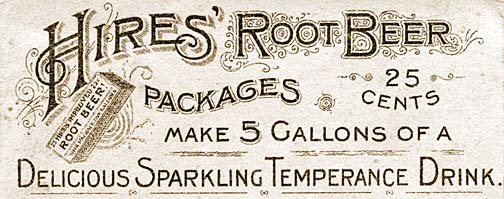
A Word About Temperance
"Moderation is best in all things" says the poet Hesiod, but this oft-quoted motto of moderation and temperance provides little guidance on just how much moderation is best for which things. The word temperance refers to personal restraint and self-control, but its meaning is colored nowadays by our hindsight of the disastrous "noble experiment" of Prohibition which only encouraged the opposite results of crime and lawlessness.
Before Prohibition became law in 1920, however, the Temperance movement was just one part of the many Progressive causes to improve modern life and provide equal opportunity to all Americans, like winning voting rights for women, improving sanitation and ending child labor. In the early years of the nineteenth century, when clean water was not widely available, Americans young and old imbibed in all types of alcohol from sunup to sundown and at all social occasions. In the new democracy, citizens freed from the old European strictures on behavior and convention thought nothing wrong with a bit of drunkeness on any day of the week. In the patriarchal family structure of that time, it was the women and children dependents who suffered from the indiscretions of inebriate men, yet had little political power to change the situation.
One of the earliest anti-alcohol groups in the U.S was the American Temperance Society, organized in Boston in 1826. Originally the group preached against the grim effects of extreme drunkeness and distilled spirits, while beer and wine were seen as unthreatening and an important part of daily life. Members of temperance societies signed a public pledge declaring which types of alcohol they chose to cut out of their lives to demonstrate improvement and to and help each other avoid the social pressure to partake.
Within a few years however, the moderates who abstained only from hard liquor were supplanted by those who pledged "T-Total" abstinence from all alcohol. Moderate members lost interest in the cause, leaving the firebrands and hotheads pushing for a total ban on alcohol use. Perhaps it was too hard to heat passion for the movement under the lukewarm moderate's banner of "to each his own". When the momentary popularity of the cause faded after a few years, the diehard members who were left to set the agenda of no alcoholic drinks of any kind.
In the decades-long struggle leading to Prohibition, it is the temperance extremists who are remembered, such as Carrie Nation flailing her hatchet in a fury against the saloons of Kansas between 1900-1910. In the end, the anti-German and anti-immigrant sentiment of World War I finally pushed enough votes to ratify the Volstead Act in every state in 1919, which went into effect in 1920, banning most sales of alcohol in the United States.
The perils of Demon Sugar
Ginger ales and lemonades have been marketed in the U.S. since the 1850s, and cola drinks were first sold at pharmacy counters in the 1880s. During Prohibition, however, soft drinks came into their own as popular bottled beverages. The soda pop industry expanded to over 8,000 bottling plants in the 1920s, a high-water mark before the Depression forced many of them out of business.
The replacement of alcohol with soft drinks in polite society fit with the changing urbanized culture of the twentieth century. The modern American worker needed a clear sober mind all day to be efficient and productive in the modern workplace. With sugar for energy, caffeine for alertness and flavorings for enjoyment, bottled soda pops were a perfect pick-me-up at any time of day. Even after the repeal of Prohibition in 1933, soda pops retained their place in American culture.
Gradually the soft drinks that had been an occasional treat became an essential part of daily life. Post World War II, rising living standards made such small luxuries more affordable to all.
For many decades the standard soft drink bottle was a modest 6 oz., but in the 1960s some bottlers began selling larger "family sizes" of 12 oz. or 16 oz. as a competitive pricing battle in the crowded soda marketplace. Perhaps this was an acknowledgement that the larger cost of the drink is the packaging rather than the ingredients of the sugar water inside. In any case the trend has continued to the present day, with 32 oz. fountain drinks or larger available at convenience stores and fast food restaurants, and no expectation of sharing with the rest of the family.
Are soda pops and sugar as evil as portrayed by puritanical lifestyle bloggers and health reformers? If you look at the amount of calories per bottle of most any soda pop it's easy to see that these soft drinks are decadent luxuries and not essential food items. But as an occasional treat they still hold the promise of the ideal delicious, sparkling, temperance drink: a little bit of delight, energy and focus to help you enjoy your day.